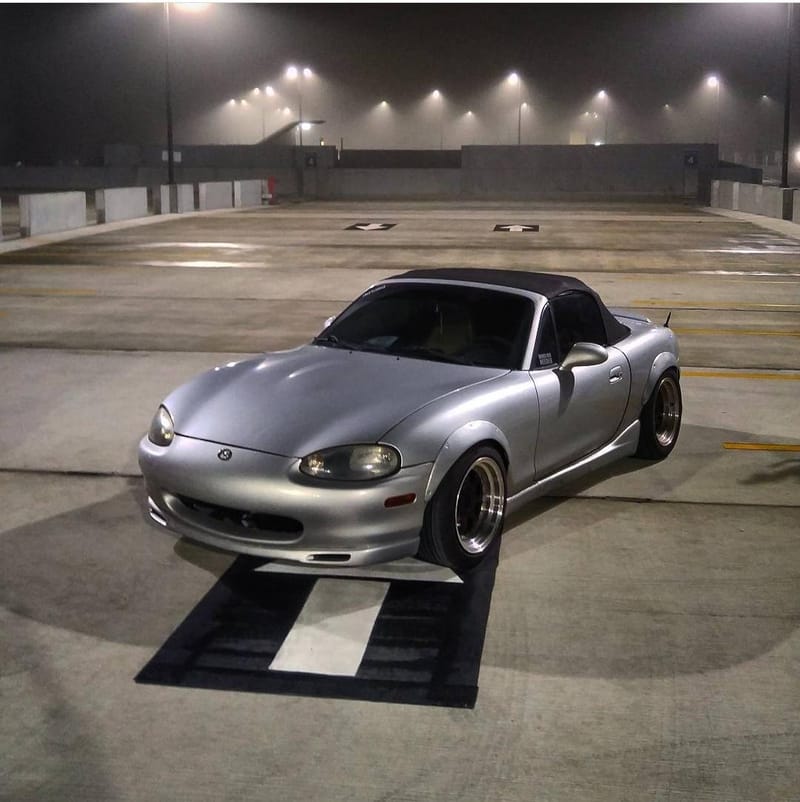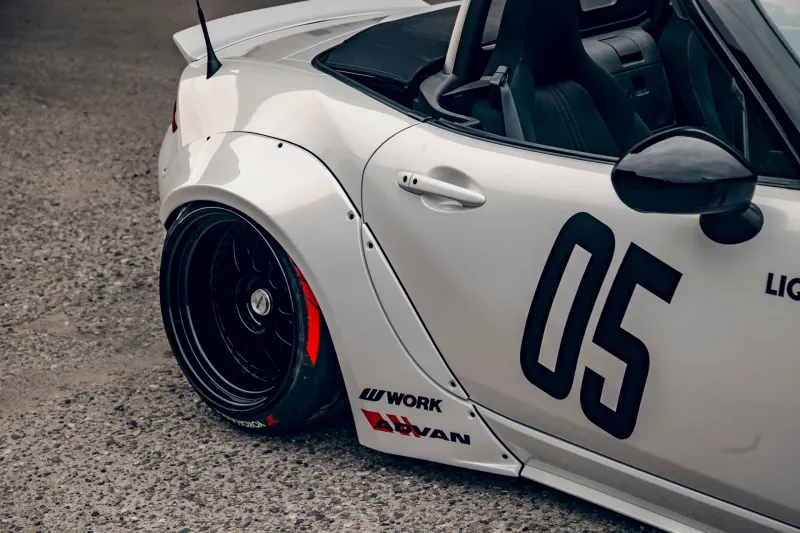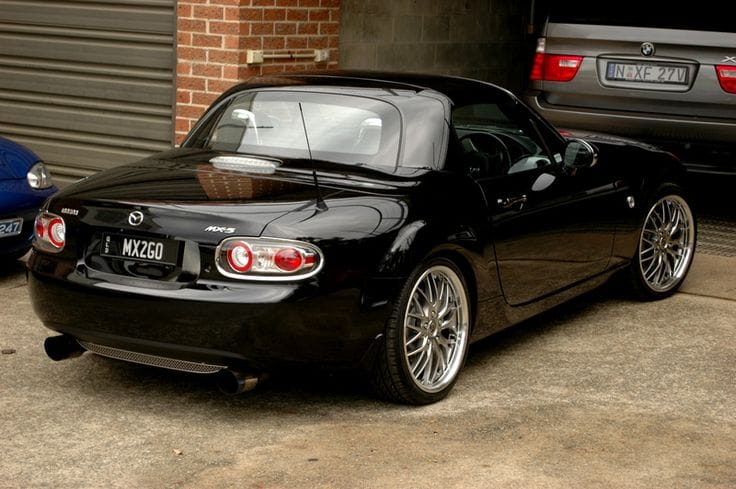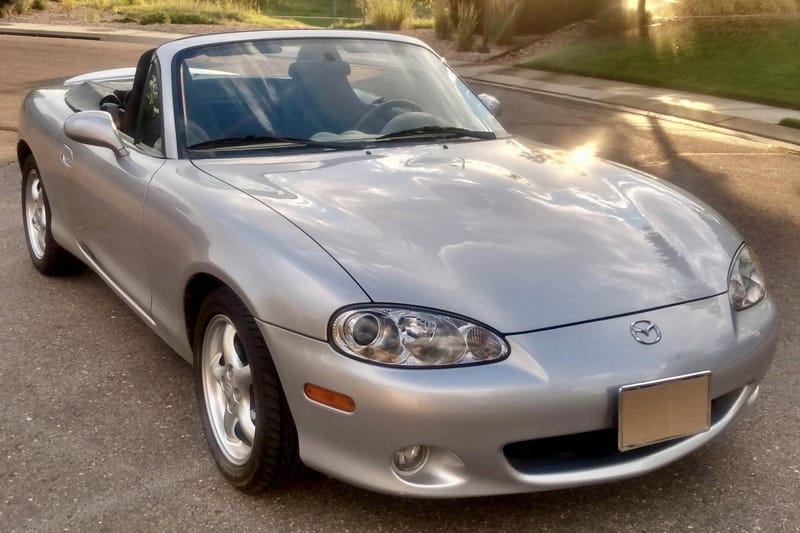The NA Miata: A Complete Guide to the First Gen Miata for 2024
Are you a fan of classic sports cars? If so, then the early 1990s Miata may be right up your alley. With its sleek design, agile handling, and affordable price tag(for now), the first generations of Miata quickly became a favorite among car enthusiasts. In this blog post, we will take a comprehensiv
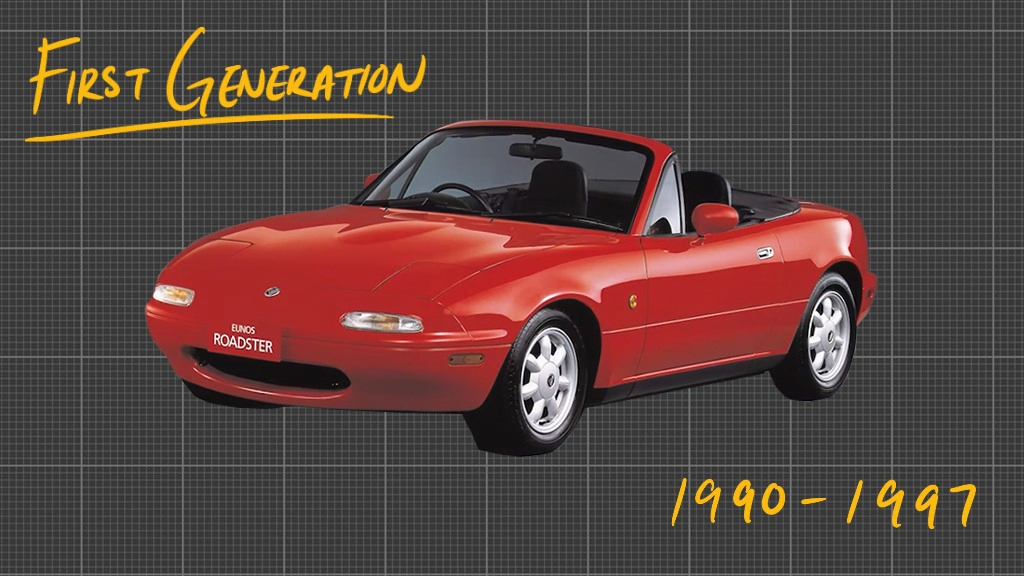
Are you a fan of classic sports cars? If so, then the early 1990s Miata may be right up your alley. With its sleek design, agile handling, and affordable price tag(for now), the first generations of Miata quickly became a favorite among car enthusiasts.
In this blog post, we will take a comprehensive look at the first generation of the Mazda Miata OR more commonly known as the NA generation because of the model code within its VIN numbers, exploring its popularity, key features, driving impressions, and tips for maintaining and modifying this iconic vehicle. Whether you already own an NA Miata or are considering purchasing one, this guide is here to help you make the most of your ownership experience.
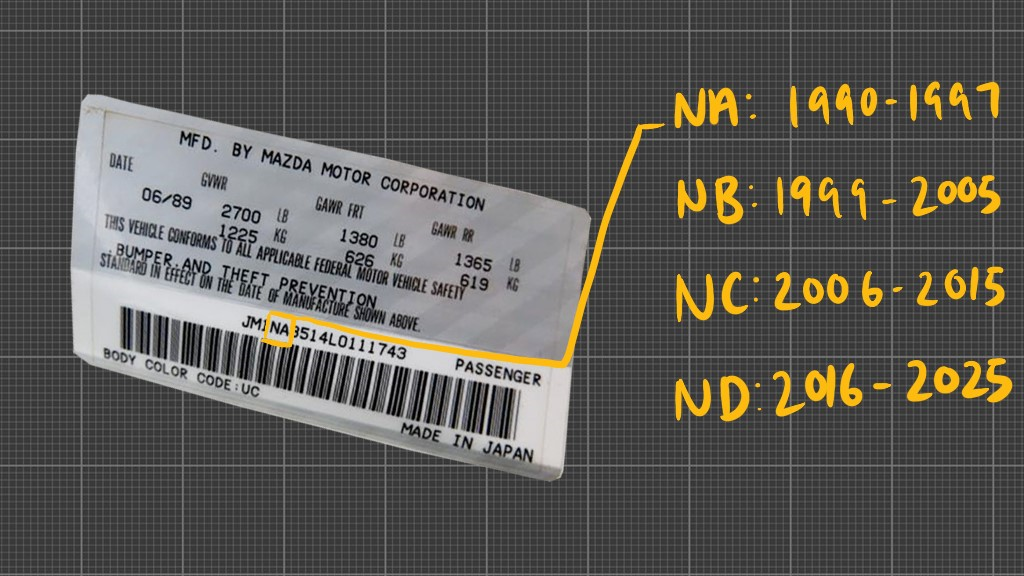
First, we will delve into the factors that contributed to the popularity of the first generation Miatas. From its classic roadster design to its reputation for reliability and fun, we will explore why this car captured the hearts of so many drivers. Next, we will provide an in-depth overview of the key features and specifications of the NA Miata. From its lightweight body to its responsive engine, you will gain a comprehensive understanding of what makes this car a true joy to drive.
But it’s not just about the specs – we will also share our driving impressions of the NA Miata. Whether you’re cruising down the highway or taking on twisty backroads, we will discuss how this car handles and performs on different terrains. We will also compare it to contemporary cars to see how it stacks up against its rivals.
Of course, owning a classic car comes with the responsibility of proper maintenance. In the maintenance section of this guide, we will provide you with a routine maintenance checklist to keep your Miata running smoothly. Additionally, we will address common problems and their solutions, as well as tips for finding the right parts for your car.
For those looking to make their NA Miata truly their own, we will explore popular modifications and offer guidance on how to choose the right ones. We will also discuss the safety considerations that come with modifying your Miata.
If you’re considering investing in an NA Miata, we’ve got you covered too. We will discuss the resale value of these cars and provide tips on what to look for when buying a used NA. We will also touch on insurance and other important considerations for owners.
In conclusion, the NA Miata continues to captivate car enthusiasts with its timeless design, thrilling performance, and affordability. Whether you’re a proud owner or aspire to be one, this blog post will serve as your ultimate guide to understanding, maintaining, and enjoying the enduring appeal of the NA Miata. Stay tuned for the upcoming sections where we dive deep into the world of this iconic sports car!
Introduction to the First Generation NA Miata
The Mazda Miata, also known as the Mazda MX-5 Miata, is a two-seater convertible sports car that made its debut in 1989. It quickly became a sensation in the automotive world with its striking design, exceptional handling, and affordable price point. In this section, we will delve into the factors that contributed to the popularity of the first generation Miata, as well as provide an overview of its key features and specifications.
Understanding the Popularity of the NA Miata
The NA Miata captured the hearts of car enthusiasts worldwide for several reasons. Firstly, it paid homage to the classic British roadsters of the past, embodying the spirit of open-top motoring and capturing the essence of pure driving pleasure. Its sleek and timeless design, with its long hood, short overhangs, compact dimensions, and of course those popup headlights, added to its undeniable appeal.
Secondly, the NA Miata offers an exhilarating driving experience. The lightweight construction, perfectly balanced chassis, and rear-wheel drive layout contributed to its exceptional handling and responsiveness. The car’s low center of gravity and near-perfect weight distribution made it a joy to drive on both winding roads and racetracks.
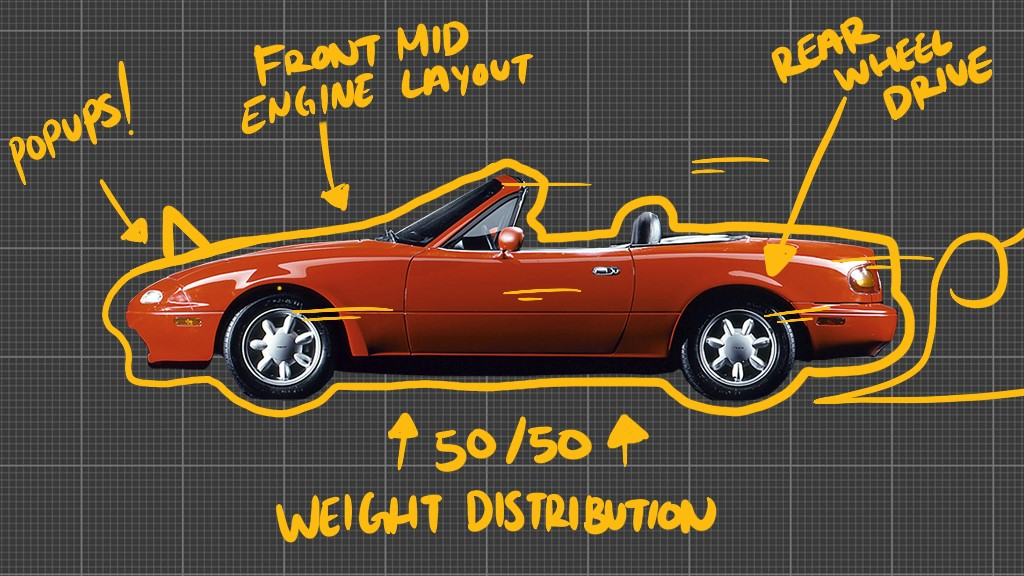
Furthermore, the NA Miata was known for its affordability. Unlike many sports cars of the time, the Miata was priced within reach for a wider range of buyers. This accessibility, combined with its fun and engaging driving dynamics, made it a popular choice for both seasoned enthusiasts and those new to the world of sports cars.
Key Features and Specifications
Now, let’s take a closer look at the key features and specifications that defined the NA Miata. The car was powered by a 1.6-liter or 1.8-liter inline-four engine, depending on the model year, which delivered a modest yet spirited amount of horsepower. The lightweight design of the Miata, coupled with its responsive engine, made it a nimble and agile performer. (The NA only weighted about 2200 lbs!)
The convertible soft-top was a defining feature of the Miata, allowing drivers to enjoy the open-air experience at the pull of a latch. The top could be easily lowered or raised, providing a seamless transition between coupe-like comfort and wind-in-your-hair freedom.
Inside the cabin, the NA Miata featured a driver-focused cockpit with supportive seats, an simple and intuitive dashboard layout. The ergonomics were designed to enhance the connection between the driver and the car, ensuring a truly immersive driving experience.
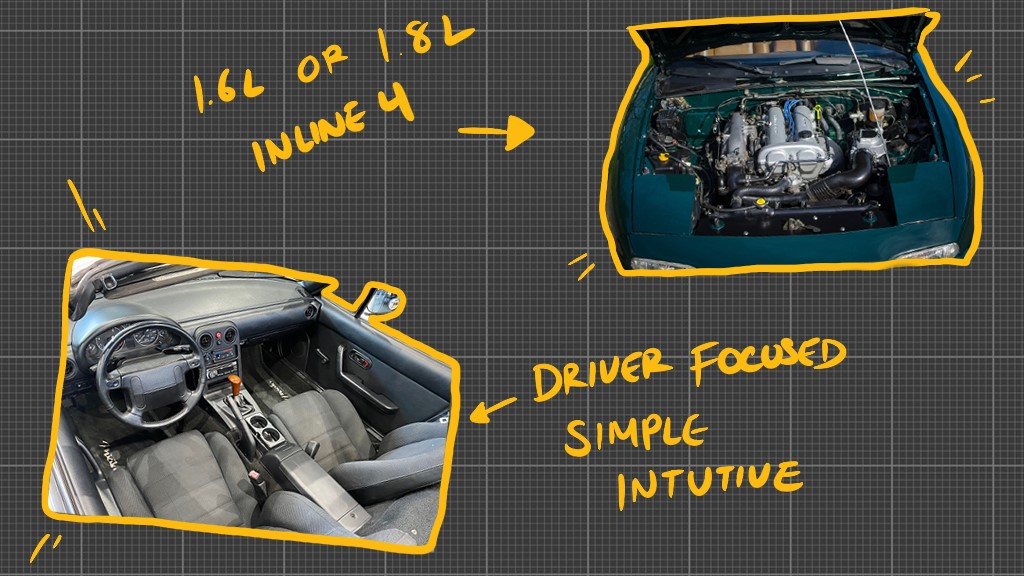
In terms of safety, the early Miatas was equipped with features such as dual airbags, anti-lock brakes, and seat belts with pretensioners. While it may not offer the advanced safety technologies found in modern cars, the lightweight roadster prioritized the fundamentals of driving enjoyment and driver engagement.
With its timeless design, thrilling driving dynamics, and affordability, it’s no wonder that the NA Miata became an instant classic. In the following sections, we will delve deeper into the driving impressions of the Miata, maintenance tips for keeping it in top shape, and how to make modifications to personalize and enhance your ownership experience.
Driving Impressions of the NA Miata
The driving impressions of the Miata are truly what set this iconic sports car apart from the rest. In this section, we will explore how the car handles, its performance on different terrains, and how it compares to contemporary cars of its time.
How the Car Handles
One of the standout characteristics of the NA Miata is its exceptional handling. The lightweight construction, combined with its near-perfect weight distribution and low center of gravity, allows the Miata to navigate corners with precision and agility. The responsive steering provides excellent feedback, making it easy to place the car exactly where you want it on the road.
The suspension setup of the Miata strikes a balance between sportiness and comfort. It offers a firm but compliant ride, soaking up bumps and imperfections in the road while maintaining composure during spirited driving. The well-tuned suspension, along with the car’s balanced chassis, contributes to its remarkable stability and confidence-inspiring handling characteristics.

Performance on Different Terrains
The NA Miata is a delight to drive on various terrains. Whether you’re cruising along a scenic coastal road or navigating twisty mountain passes, the Miata’s nimble nature and responsive power delivery make every drive enjoyable. The car’s lightweight design allows it to accelerate quickly and effortlessly, providing a responsive and engaging driving experience.
Even in adverse weather conditions, the Miata remains composed and predictable. The rear-wheel drive layout, coupled with its well-calibrated traction control system, ensures that the car maintains stability and control, allowing you to confidently tackle wet or slippery roads.
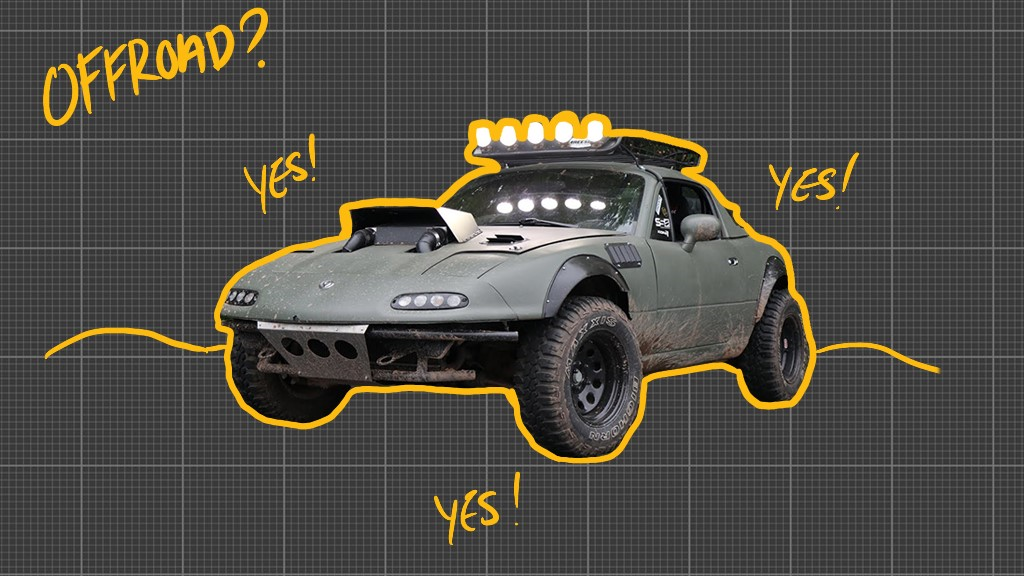
Comparisons with Contemporary Cars
When comparing the NA Miata to its contemporary cars of the time, it often stood out as a true driver’s car. While other sports cars may have had more power or advanced technologies, the Miata’s focus on simplicity, balance, and driver engagement made it a standout choice.
In terms of performance, the Miata’s acceleration may not have been as blistering as some of its more powerful counterparts, but its lightweight nature and nimble handling compensated for that. It offered a connected and engaging driving experience that few other cars could match.
Additionally, the Miata’s affordability and relatively low maintenance costs made it an attractive option for those seeking a sports car without breaking the bank. Its reputation for reliability also added to its appeal, as many owners found the Miata to be a dependable and enjoyable car to own and drive.

In the next section, we will shift our focus to maintaining your Miata, discussing the routine maintenance checklist, common problems, and solutions, as well as tips for finding the right parts to keep your Miata in top shape.
Maintaining Your NA Miata
Maintaining your Miata is essential to ensure its longevity and optimal performance. In this section, we will provide you with a comprehensive maintenance guide, including a routine maintenance checklist, common problems and their solutions, and tips for finding the right parts for your Miata.
Routine Maintenance Checklist
Regular maintenance, like in any other car is key to keeping your vehicle running smoothly. Here’s a checklist of essential routine maintenance tasks:
- Oil Changes: Regularly change the engine oil and replace the oil filter as per the manufacturer’s recommendations.
- Fluid Checks: Check and top up the coolant, brake fluid, power steering fluid, and transmission fluid levels as needed.
- Air Filter: Inspect and clean or replace the air filter to ensure proper airflow to the engine.
- Spark Plugs: Replace the spark plugs at regular intervals for optimal engine performance.
- Belts and Hoses: Inspect the belts and hoses for signs of wear or damage, and replace them if necessary.
- Brake Maintenance: Check the brake pads, rotors, and brake fluid regularly for wear and proper function. Replace brake components as needed.
- Tire Care: Monitor tire pressure and tread depth regularly. Rotate the tires periodically to ensure even wear.
- Battery: Check the battery’s condition and clean the terminals regularly to prevent corrosion. (It’s easy to forget about the battery in the Miata’s since it’s in the trunk!)
- Lights: Inspect all exterior lights, including headlights, taillights, and turn signals, to ensure they are functioning properly.
- Wipers: Check the condition of the windshield wiper blades and replace them if they are worn or not effectively clearing the windshield.
Common Problems and Their Solutions
While the NA Miata is known for its reliability, there are a few common issues that owners may encounter. Here are some of the common problems and their solutions:
- Electrical Issues: You have to remember that these cars are approaching 30 years old, and some owners may experience electrical problems, such as intermittent power windows or faulty dashboard lights. Loose connections or worn-out switches often cause these issues.
- Convertible Top Maintenance: The convertible top may develop wear and tear over time, leading to leaks or difficulty in operation. Regularly cleaning and conditioning the top, as well as addressing any tears or fraying, can help maintain its functionality. Don’t forget to drain the side rails as well! (There are also factory hardtops available for these cars if you prefer to go down that route!)
- Rust Prevention: The early Miatas are prone to rust in certain areas, particularly around the rocker panel, wheel arches, sills, and undercarriage. Regularly inspecting and treating these areas with rust inhibitors or protective coatings can help prevent corrosion.
- Cooling System Issues: Some Miatas may experience cooling system problems, such as overheating or coolant leaks. Regularly flushing and refilling the coolant, checking for leaks, and ensuring the proper functioning of the radiator and water pump can help prevent these issues. Another trick is that once the radiator starts turning a brownish color, it’s a sign to start looking for a replacement or upgrade.
Remember, if you encounter any significant problems or are unsure about how to address a particular issue, it’s best to consult with a qualified mechanic or Miata specialist.
Finding the Right Parts for Your NA Miata
When it comes to replacing parts for your NA Miata, it’s important to source high-quality components that are specifically designed for your car. Here are some tips for finding the right parts:
- OEM Parts: Original Equipment Manufacturer (OEM) parts are manufactured by the same company that produced the parts for your Miata when it was originally built. These parts offer the highest level of compatibility and quality, you can almost never go wrong with buying OEM replacement parts.
- Aftermarket Parts: Aftermarket parts are produced by third-party manufacturers. While they may offer a wider range of options and sometimes be more affordable, it’s crucial to ensure that they meet or exceed the quality standards of OEM parts.
- Miata Specialist Shops: Look for specialized shops or online retailers that specialize in Miata parts. These vendors often have a deep understanding of the specific needs of the Miata and can help you find the right parts for your car.
- (Some really popular sites include: MossMiata & Flyin Miata)
- Online Marketplaces: Online marketplaces can be a great resource for finding both OEM and aftermarket parts. Just be sure to research the seller’s reputation and carefully review the product details to ensure it matches your specific needs.
By following a regular maintenance routine and using high-quality parts, you can keep your 1990s Miata in top shape and enjoy the thrill of driving it for years to come.
In the next section, we will explore the world of modifying your 1990s Miata, discussing popular modifications, how to choose the right ones, and important safety considerations.
Modifying Your NA Miata
Modifying your Miata allows you to personalize and enhance your ownership experience. In this section, we will explore popular modifications, provide guidance on how to choose the right ones for your needs, and discuss important safety considerations when modifying your Miata.
Popular Modifications for the 1990s Miata
- Suspension Upgrades: While the stock suspension is great, upgrading the suspension can significantly improve the handling and performance of your Miata. Options include lowering springs, coilovers, and sway bars to reduce body roll and improve cornering capabilities.
- Exhaust System: Upgrading the exhaust system can enhance the sound and performance of your Miata. Options range from cat-back systems to headers and high-flow catalytic converters, allowing you to achieve a more aggressive exhaust note and increased horsepower.
- Intake and Air Filters: Replacing the stock air intake system with a high-performance intake and air filter can improve airflow to the engine, resulting in increased power and throttle response.
- Wheels and Tires: Upgrading to lightweight aftermarket wheels and performance tires can enhance both the aesthetics and performance of your Miata. It can improve grip, handling, and overall responsiveness.
- Brake Upgrades: Enhancing your Miata’s braking system with high-performance brake pads, rotors, and stainless steel brake lines can improve stopping power and reduce brake fade during intense driving.
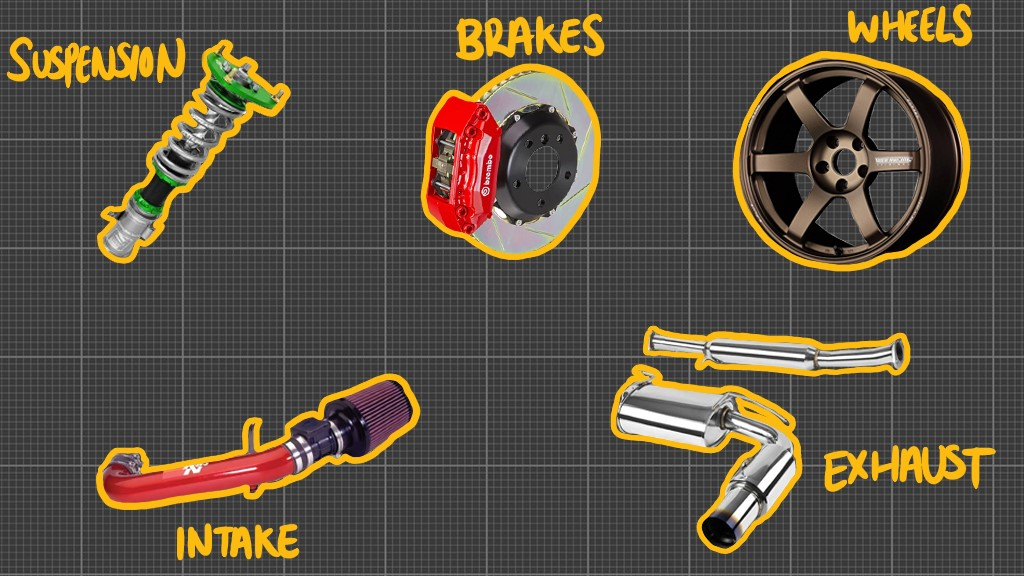
How to Choose the Right Modifications
When considering modifications for your Miata, it’s crucial to keep a few factors in mind:
- Your Driving Style: Consider how you primarily use your Miata. Are you more focused on track performance or daily driving comfort? Understanding your driving preferences will help you prioritize modifications that align with your goals.
- Budget: Set a budget for modifications and prioritize upgrades based on your available funds. It’s important to strike a balance between cost and value, ensuring that each modification provides a meaningful improvement..
- Product Quality: Research the reputation and quality of aftermarket brands before making a purchase. Opt for reputable manufacturers that have a track record of producing reliable and high-performance products.
- Complementary Modifications: Keep in mind how different modifications may interact with one another. Some modifications may require additional upgrades to maintain a balanced and optimized setup.
Safety Considerations When Modifying Your Miata
While modifications can enhance your Miata’s performance and aesthetics, it’s essential to prioritize safety. Here are some important safety considerations:
- Tire and Wheel Compatibility: Ensure that any wheel and tire upgrades are compatible with your Miata’s suspension and braking system. Improper fitment can negatively impact handling and safety. (You wouldn’t want excessive rubbing!)
- Brake System Upgrades: If you enhance your Miata’s engine performance, consider upgrading the brakes to match the increased power. This ensures that you can safely and effectively bring the car to a stop. (Big brake kit?!)
- Suspension Tuning: Properly tune your suspension modifications to maintain a balance between comfort and performance. An excessively stiff suspension can compromise ride quality and safety on uneven road surfaces.
- Professional Installation: For complex modifications or those affecting critical systems, it’s recommended to seek professional installation. This ensures that the modifications are done correctly and safely.
By approaching modifications with careful consideration, you can enhance your Miata’s performance while ensuring your safety and enjoyment on the road.
In the next section, we will discuss the aspects of investing in a first gen Miata, including understanding the resale value, tips for buying a used Miata, and important considerations such as insurance coverage.
Investing in a first gen Miata
Investing in a first-generation Miata can be an exciting venture for car enthusiasts. In this section, we will explore the aspects of investing in a first gen Miata, including understanding the resale value, what to look for when buying a used Miata, and important considerations such as insurance coverage.
Understanding the Resale Value
The resale value of a NA Miata can vary depending on several factors, including the model year, condition, mileage, and market demand. Generally, well-maintained and low-mileage examples tend to hold their value better. However, it’s important to note that Miata values can fluctuate based on market trends and collector interest.
To get a sense of the current market value, you can research online resources, such as automotive marketplaces and enthusiast forums, to see what similar Miatas are being listed and sold for. Additionally, consulting with local car appraisers or Miata specialists can provide valuable insights into the resale value of specific models.
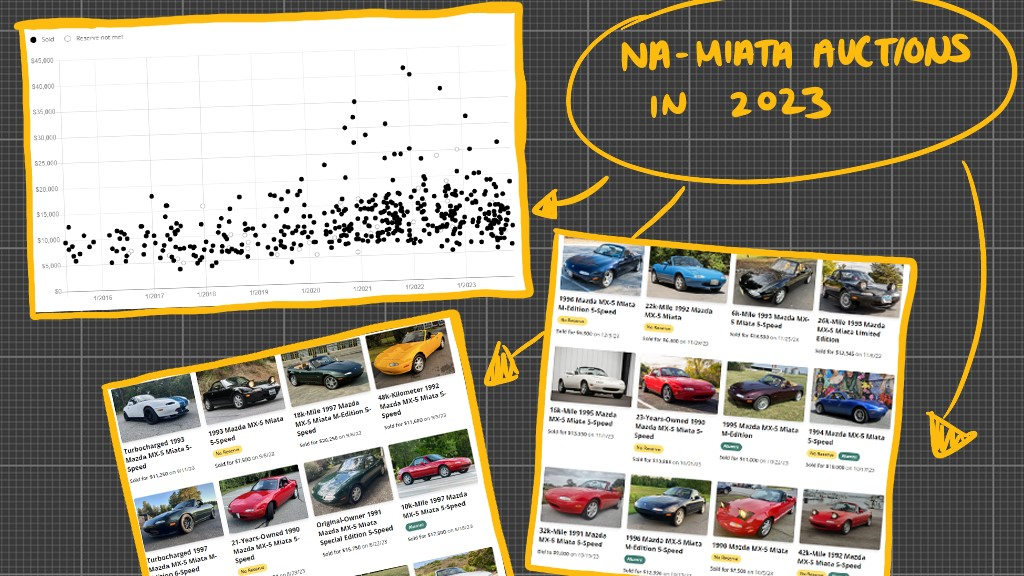
What to Look for When Buying a NA Miata
When buying a used NA Miata, like any other car, it’s important to conduct a thorough inspection to ensure you’re getting a well-maintained and reliable vehicle. Here are some key factors to consider:
- Service History: Review the maintenance records to verify that the car has been regularly serviced and properly maintained. This includes routine maintenance, as well as any major repairs or part replacements.
- Mechanical Condition: Inspect the engine, transmission, and suspension components for signs of leaks, excessive wear, or damage. Consider having a pre-purchase inspection performed by a qualified mechanic to identify any potential issues.
- Body and Frame: Check the body panels and undercarriage for signs of rust, accidents, or damage. Rust can be a common issue in older Miatas, so pay close attention to areas such as the wheel arches, sills, floor pans, and ROCKER PANELS!
- Convertible Top: Carefully check the condition of the soft top. Look for any tears, leaks, or signs of wear that may require repairs or a replacement.
- Test Drive: Take the car for a test drive to evaluate its overall performance, handling, and comfort. Pay attention to any unusual noises, vibrations, or issues with the clutch, brakes, steering, and suspension.
- Vehicle History Report: Obtain a vehicle history report to check for any accidents, title issues, or previous ownership details. This can provide valuable information about the car’s background and help you make an informed decision.
Insurance and Other Considerations
Before purchasing a NA Miata, it’s important to consider insurance coverage. Contact insurance providers to obtain quotes and understand the cost of insuring the specific model you’re interested in. Factors such as the car’s age, condition, usage, and your driving history can impact insurance rates.
Additionally, budget for ongoing maintenance and potential repairs. While the Miata is known for its reliability, older vehicles may require more frequent upkeep and occasional part replacements. It’s wise to set aside funds for routine maintenance and unforeseen repairs to ensure your Miata remains in top condition.
By conducting thorough research, inspecting the vehicle, and considering important factors such as insurance coverage and ongoing maintenance costs, you can make a well-informed investment in a first gen Miata.
In the final section, we will conclude our comprehensive guide on the NA Miatas, highlighting the enduring appeal of this iconic sports car.
Conclusion: The Enduring Appeal of the NA Miata
The NA Miata continues to captivate car enthusiasts with its timeless design, exhilarating driving experience, and affordable ownership. In this comprehensive guide, we have explored the popularity of the early Miatas, its key features and specifications, driving impressions, maintenance tips, modifications, and considerations for investing in one.
With its classic roadster design, the NA Miata pays homage to the golden age of sports cars while offering modern reliability and performance. Its lightweight construction, balanced chassis, and rear-wheel drive layout provide exceptional handling and a thrilling driving experience.
To keep your Miata in top shape, we discussed the importance of routine maintenance, including oil changes, fluid checks, air filter replacement, and regular inspections. We also highlighted common problems and their solutions, as well as tips for finding the right parts to maintain your Miata’s performance and reliability.
For those looking to personalize their Miata, we explored popular modifications such as suspension upgrades, exhaust systems, intake and air filters, wheels and tires, and brake enhancements. Additionally, we provided guidance on how to choose the right modifications based on driving style, budget, and safety considerations.
Investing in an NA Miata offers a unique ownership experience. We discussed understanding the resale value, what to look for when buying a used Miata, and important considerations such as insurance coverage and ongoing maintenance costs.
In conclusion, the NA Miata has stood the test of time as a beloved sports car for enthusiasts around the world. Its combination of timeless design, spirited performance, and affordability make it an enduring icon in the automotive world. Whether you’re a proud owner or aspiring to become one, we hope this comprehensive guide has provided valuable insights and knowledge to enhance your appreciation and enjoyment of the NA Miata.
Get behind the wheel, feel the wind in your hair, and experience the pure joy of driving a Miata – a true symbol of open-top motoring and driving pleasure.

